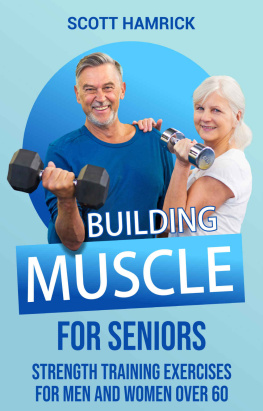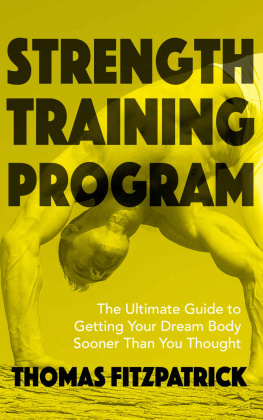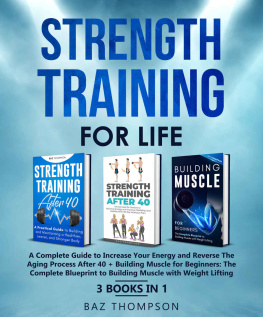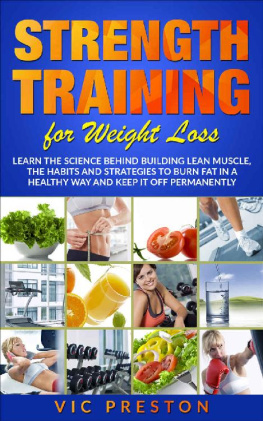The content contained within this book may not be reproduced, duplicated or transmitted without direct written permission from the authors or the publisher.
Under no circumstances will any blame or legal responsibility be held against the publisher, or authors, for any damages, reparations, or monetary loss due to the information contained within this book, either directly or indirectly. You are responsible for your own choices, actions, and results.
This book is copyright protected. This book is only for personal use. You cannot amend, distribute, sell, use, quote or paraphrase any part, or the content within this book, without the consent of the authors or publisher.
Please note the information contained within this document is for educational and entertainment purposes only. All effort has been executed to present accurate, up to date, and reliable, complete information. No warranties of any kind are declared or implied. Readers acknowledge that the author is not engaging in the rendering of legal, financial, medical or professional advice. The content within this book has been derived from various sources. Please consult a licensed professional before attempting any techniques outlined in this book.
By reading this document, the reader agrees that under no circumstances are the authors responsible for any losses, direct or indirect, which are incurred as a result of the use of the information contained within this document, including, but not limited to, - errors, omissions, or inaccuracies.
INTRODUCTION
For the past couple of years we've been on a mission (and yes, sometimes it seems more like mission impossible). Many 50+ers seem to have slipped into some kind of "old-age trance." While in that trance, they accept that when they break through the border of 50, they're destined to be plagued with aches, pains, and inflexibility. They accept it and seemingly make room for these discomforts in their lives. This has to change.
Sadly, many 50+ers believe that being fit, flexible, and agile is only for some people. Somehow, they think that only a lucky few get to head into 50 and even 60, still able to touch their toes, reach for something or head out for a run or round of golf. The reality is harsh; we get that. You've spent the majority of your life scrambling after children and chasing careers, and now that you've hit fifty and life is slowing down, you're left with that "Woah, what happened?" feeling.
Here come the aches and pains because, well, you haven't been moving as much as you used to when you were twenty. You undoubtedly spent Saturdays in your 30's and 40's trying to catch up on laundry (which may seem like an Olympic event, but it's not) and stressing over your children's educations. You spent more time on the couch (trying not to assume the fetal position) on Sundays than anywhere near a sporting facility, and perhaps you don't even own a pair of running shoes or a gym bag by this stage. Your life got busy, but not in an active way. What a conundrum! It all makes sense that bending, touching your toes, or even doing a few squats (not even for exercise merely to pick something up) take it out of you. Your body resists with all its might. It strikes back with aches and pains and if it has the strength to muster it, strains too. And you translate all of this bodily reaction to mean "I don't want to exercise or move" or "I can't exercise or move" when in reality, the body is saying something else entirely. Don't worry; we don't blame you for not understanding. Are you curious what the real message is? Here goes:
"I need to get stronger!"
And now that you know what that message is, what are you going to do about it? Of course, the first step is reading this book. And without giving you too much of a spoiler alert, we'd like to explain why you should read it. First and foremost, it's about knowledge. Knowing what you're in for in the 50+ club will help you find methods and strategies of not just coping but thriving. You need to thrive because as you get older, your muscles and joints weaken. This isn't a foregone conclusion, by the way. Unfortunately, this is where people go wrong. You read something like "muscles and joints weaken as you age," and you accept it when in reality, the truth is that muscles and joints that aren't worked out and maintained weaken as you age.
Suppose you're willing to do the maintenance on your body just as religiously as you do your vehicle or household maintenance. In that case, you may discover (and we mean you will ) that your muscles, joints, and bones hold out pretty well. Another thing that changes as you age is the range of movement, overall strength, and blood circulation. Hey, you're getting older, so it's entirely acceptable that things slow down a little. That's okay, but how much are you willing to let things slow down?
Are you the type of person willing to spend your sixties glued to a sofa because everything seems like too much physical effort? Or are you the spry sixty-something-year-old visiting friends, playing golf, going on long walks (maybe even jogs), and carrying your groceries? Well, if you want to be the latter, your fifties is the perfect time to start making lifestyle changes that support that spry sixty-something ideal. What if we told you that learning to strengthen your muscles, joints, and bones is the answer? You merely have to learn to incorporate more dedicated techniques into your daily life, and all this talk of aches and pains would be a distant memory. That's why you have to read this book! Not just to learn about why your body changes but also to learn how to mitigate changes and stay younger, fitter, and stronger for longer. At this particular point, you're probably wondering who we are and why you should be taking our advice on strength training or anything else 50+ fitness-related at all. So here's what you need to know.
Our names are Alicia Diaz and Lee Davidson, and we're just like you. By that, we mean that we've already had our big 5-0 birthday celebrations, and we're well on our way to the next decade. Were both physically active at this point in our lives, and not a day goes by that we don't train. We spend much of our time hiking and running, playing tennis and golf, and we don't just do this as "sport" these are things we do for recreation and socializing. Your daily to-do-list gets a little shorter after 50, and keeping fit and active has been our go-to. But, it hasn't always been this way. Well, let's rephrase that. We used to be extremely fit and active in our twenties. In fact, we lived for sporting activities.
But then we did what most couples do and had kids.
Having kids is a whirlwind adventure on its own, and if you have any, you will know just how challenging (or impossible) it is to keep up with your favorite sports and hobbies when those bundles of joy come along. Your gym kit becomes a comfy pair of pajamas, Saturday morning runs transition into baby playdates, and Sundays on the golf course are thwarted by the constant need to keep mini-humans alive.







